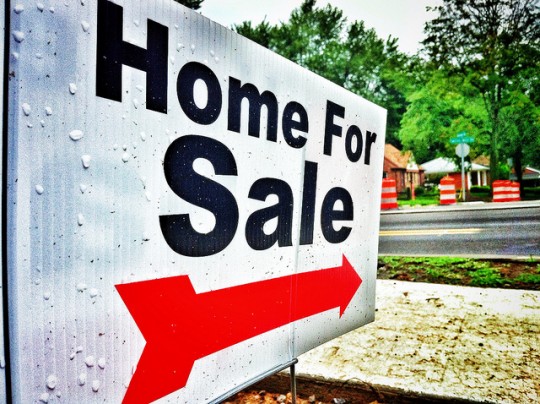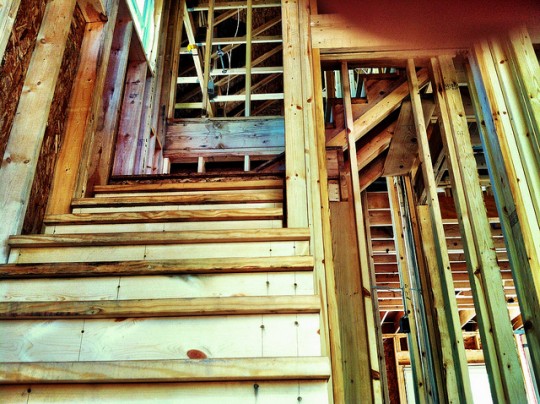Each month, the U.S. Department of Housing and Urban Development and the U.S. Department of the Treasury collect key data on the housing market’s health and the results of the administration’s mortgage modification and foreclosure prevention efforts. In April, the government’s monthly Housing Scorecard found that, though home prices are still rising and foreclosures have hit their lowest level in many years, home sales slowed during the winter, with new home sales dropping to an eight-month low in March. Katherine O’Regan, HUD assistant secretary for policy development and research, said harsh winter weather, tight credit standards, and fewer distressed properties for sale combined to slow the pace of home sales. But, according to O’Regan, the housing market is stabilizing despite the rough winter months. As evidence, the scorecard highlights a 6.9 percent rise in home prices over last year, foreclosure completions at their lowest level since mid-2007, and stabilizing existing-home sales data. More here.
Tag Archive for housing market
Potential Home Buyers Get Ready To Buy
As confidence in the economy grows, so do the number of potential home buyers that say they’re ready to enter the housing market. According to a new survey from PulteGroup, one of the nation’s largest homebuilders, 74 percent of Americans say the economy has remained steady or improved in the last year and 57 percent think now is a good or excellent time to purchase items they need or want. And buying a home ranks high on the list of things Americans want. Among respondents, 67 percent said they plan to purchase a home in the future with 32 percent looking to buy within the next two years. Margaret Gramann, senior vice president of sales for PulteGroup, said Americans have a growing sense of optimism that the housing market is improving and that these positive changes may be sustainable. And that growing sense of optimism has boosted their interest in buying a home, with 41 percent of respondents indicating that their interest has increased over the past year. Needing more space and the view that owning a home is a smart financial investment were the top two reasons cited by participants as spurring their interest in buying a home. More here.
Americans’ Optimism About Home Prices Grows
A majority of Americans believe that home prices in their area will rise over the next year, according to a new survey from Gallup. The survey found 56 percent of Americans say they expect average prices to increase, which is up from an all-time low of 21 percent in 2011. It is also five times the number that say prices will fall. The results of Gallup’s annual Economy and Personal Finance poll are further evidence that optimism about the housing market continues to build after experiencing sharp declines following the housing crash. Americans are confident that prices will keep trending upward and that now is a good time to capitalize by purchasing a home. In fact, 74 percent of respondents said it was a good time to buy a house, which is among the most positive readings in survey history. The number of Americans who think now is the time to buy has been climbing in recent years after dropping to 52 percent in 2006. According to Gallup, Americans’ view of the housing market has mostly recovered from the lows seen during the downturn. People feel the worst is over but prices aren’t yet overvalued. This perception is partly responsible for the expectation that this spring and summer will see an increase in home sales. More here.
Local Markets Return To Normal Nationwide
The National Association of Home Builders Leading Markets Index measures the number of metropolitan housing markets nationwide that have returned to or exceeded their last normal levels of economic and housing activity based on current permit, price, and employment data. According to the most recent release, the overall housing market is now running at 88 percent of normal activity, with 83 percent of local markets having improved over the past year. In fact, just since last month’s report, nearly 28 percent of metro areas saw their score rise. Kevin Kelly, NAHB’s chairman, said things are getting better overall and, with the housing market now entering the spring buying season, the fact that the nation’s economy is headed in the right direction is a very promising sign. Though the improved markets are dominated by smaller metros in the middle of the country experiencing growth due to an energy boom, regions outside of the energy states are starting to post gains as well, with areas like Los Angeles and San Jose joining the list of major metros showing a recovery. David Crowe, NAHB’s chief economist, said 2014 should be a strong year for housing and the overall economic rebound. More here.
69% Of Americans Say Now Is The Time To Buy
Though the housing market’s momentum slowed over the winter, Americans’ attitudes about buying and selling homes continues to move in a positive direction. In fact, according to Fannie Mae’s March 2014 National Housing Survey, 69 percent of Americans say now is a good time to buy a house and the number who say it’s a good time to sell increased 4 percent from the month before. Doug Duncan, senior vice president and chief economist at Fannie Mae, said there are several positive signs going into this year’s spring home buying season. Compared to last year, consumers are less pessimistic about their personal finances and more optimistic about the current selling environment and their ability to get a mortgage, Duncan said. For example, in the most recent survey, 52 percent of respondents said they thought it would be easy for them to get a home mortgage, which is an all-time survey high. The share of participants who said they’d prefer to buy rather than rent was also up, reaching 68 percent. Still, there is lingering uncertainty about economic conditions and many Americans continue to believe the economy is on the wrong track. Fannie Mae, however, expects a pickup in economic growth this year, which may boost the confidence of those still pessimistic about economic conditions and the housing market. More here.
Housing Market Continues To Gain Strength
Freddie Mac’s new Multi-Indicator Market Index measures the stability of the nation’s housing market based on home purchase applications, payment-to-income ratios, proportion of on-time mortgage payments, and the local employment picture. Based on these components, the Index determines how each market is trending and whether it’s becoming more or less stable. Overall, the housing market is in better shape than it has been at any point since the beginning of the Great Recession. Since June 2009, for example, home sales are up 13 percent, housing starts are up 55 percent, serious delinquencies are down 32 percent, and the unemployment rate has fallen from 9.5 percent to 6.7 percent. Still, there is room for improvement. Len Kiefer, Freddie Mac’s deputy chief economist, said – in many markets – a better employment picture, along with some income growth, makes it possible for people considering buying a home to stay within reasonable payment-to-income ratios. But, according to Kiefer, some high-cost markets are starting to feel an affordability pinch. Of the 50 states included in the Index, 25 plus the District of Columbia are improving based on three-month trends. Among the 50 metropolitan areas included, 35 are improving. Freddie Mac expects more markets to move closer to their long-term stable range as we enter the spring home buying season. More here.
Housing Starts Show Signs Of Stabilization
New home construction was flat in February, falling just 0.2 percent from the previous month according to estimates from the U.S. Census Bureau and the Department of Housing and Urban Development. Combined with upwardly revised January numbers, the results are a sign that the housing market may be regaining its footing after a particularly harsh winter slowed activity across much of the country. The coming months should provide an additional boost to new residential construction with inventory low in many parts of the country and buyer demand increasing as the weather warms. Also in the release, there was a 7.7 percent increase in permits to build privately-owned housing units. Despite the gains, however, the improvement was largely due to a spike in permits to build multi-family housing rather than single-family homes. Permits to build single-family homes fell slightly from the month before and are now at a seasonally adjusted annual rate of 588,000, down from 599,000 in January. More here.







